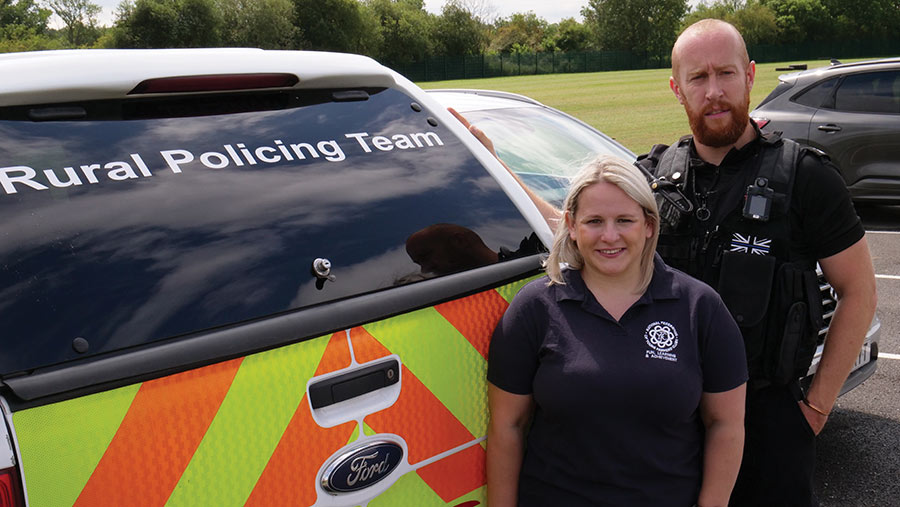NFYFC creates new course for ‘Drive it Home’ initiative
 NFYFC chairman Rosie Bennett and Leicestershire Police officer Rob Cross © NFYFC
NFYFC chairman Rosie Bennett and Leicestershire Police officer Rob Cross © NFYFC Young drivers are being targeted with a course which aims to highlight the risks of driving dangerously on rural roads.
To mark Road Safety Week (19-25 November), the National Federation of Young Farmers’ Clubs (NFYFC) has launched the new road safety course aimed at young drivers in rural areas.
The initiative comes as the latest figures collated by road safety charity Brake reveal that, per mile travelled, rural roads are still the most dangerous for all kinds of road users.
See also: Young Farmers Week: Q&A with Defra and NFYFC
With most members of Young Farmers’ Clubs living in rural locations, the NFYFC is hoping its new workshop, called Drive it Home, will help to reduce the number of accidents on rural roads.
The awareness session has been developed with the help of Leicestershire and Rutland’s Rural Policing Team, Leicestershire County Federation of Young Farmers’ Clubs (FYFC), and with input from Leicestershire Fire Service.
Fatal Four
It focuses on the four main causes of death and serious injury on the roads, known by the emergency services as the “fatal four”.
These are:
- Inappropriate speed
- Not wearing a seatbelt
- Driving while distracted
- Drink and drug driving
The Drive it Home module lasts for about 90mins and is aimed at young people aged 10-28.
It can be delivered during a YFC meeting and involves interactive activities and guidance on what to do if you are the first on the scene of a road traffic incident.
Leicestershire Police officer Rob Cross, who is also the current vice-president of Leicestershire & Rutland YFC and a former county chair, helped to develop the course.
He said: “I hope [this] will be a prevention tool and stop rural young people from becoming a statistic.
“The fatal four are a big issue for us on rural roads across the UK and I hope this course will help young people make some informed decisions.”
Leicestershire & Rutland FYFC was the pilot for the new module.
County organiser Emma Lovegrove said: “Rural young people between 16 and 29 are at the highest risk of dying from a road traffic accident.
If we can save one life in each county, then this module has worked, and we’ve made a difference.”
